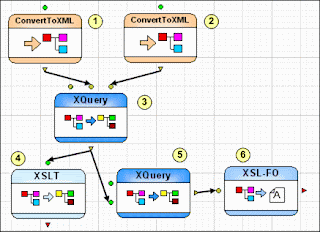An Interlude: Self-Organizing Maps
On September 28, 2006 the US Patent Office published a patent application from Microsoft entitled System and method for improving search relevance.
The inventor contemplates the following problem:
Take a collection of documents, say about the size of the Web, and try to organize them based upon textual similarities between them. Can that organization provide a useful way to index the web?The invention would augment keyword search. Documents would not be indexed based on keywords directly. Instead there would be an indirection. Documents have labels -- many labels. Just look at how documents are labeled by a typical user of del.icio.us or one of its competitors. Keywords would be related to labels that are related to documents.
Some invention like this is what Microsoft proposes using a technique called self-organizing maps.
The Self-Organizing Map (SOM) by Kohonen is motivated by the receptive fields in the human brain. High dimensional data [e.g. labeled documents where each label is a dimension] are projected in a self organizing process onto a low dimensional grid [e.g. a system of keywords that Microsoft refers to as "content tiles" in the application] analogous to sensory input in a part of the brain.See the discussion of Emergent SOM at the website of the Databionics Research Group for a more in depth treatment of self-organizing maps including some nifty visualizations of the SOM process. See also my del.icio.us som.
Meanwhile here is the patent application abstract:
A system and method for performing context based document searching is provided. A grid of content tiles is constructed corresponding to a desired concept space. Each content tile is assigned a content tag and is associated with a series of feature values. The feature values are trained to correspond to various regions of the content space. Documents are associated with one or more content tags based on a comparison of document feature values with content tile feature values. A search query is modified to include one or more content tags based on the terms in the search query and/or user preferences. The search query is then matched to documents associated with content tags contained in the search query.

 Now Velvet chose a plan called "NoMax". Velvet wasn't sure what "NoMax" did. Velvet did know that "NoMax" did not maximize the use of data from external data sources. So much for double negatives.
Now Velvet chose a plan called "NoMax". Velvet wasn't sure what "NoMax" did. Velvet did know that "NoMax" did not maximize the use of data from external data sources. So much for double negatives. 








